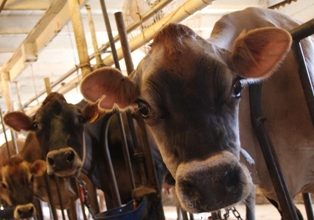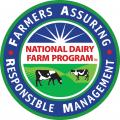The more engagement members have, the more that can be achieved, Mulhern says
PHOENIX – The incoming president of the National Milk Producers Federation (NMPF) urged dairy farmers today to become more engaged in the organization and the policymaking process.
“We need your financial commitment, yes,” Chief Operating Officer Jim Mulhern told nearly 1,000 attendees at the organization’s annual meeting. “But even more importantly, we need your time and effort and engagement. The more engagement our members have … the more our organization can achieve for our members. It’s a virtuous circle.”
Mulhern will take over as NMPF president and CEO January 1, 2014, when long-time leader Jerry Kozak retires. The organization is the voice of more than 32,000 dairy producers in Washington.
“30 years ago,” Mulhern said, “NMPF, like many organizations, could be a neatly defined hierarchy, and be successful….But not anymore.” Today, he said, both NMPF and the entire dairy industry must be more engaged in the free and rapid flow of information.
“If there’s a message I can leave with you today, it’s that the future of NMPF is not a function of what I want … or any one leader,” he said. “Rather, the successful future of NMPF will be a function of the active engagement that our board, our delegates and, yes, our grassroots members, have in the organization and the industry.”
Mulhern also stressed the need for increased transparency in the dairy industry. “Look at how food marketers have increased the flow of information about their products,” he said. “20 years ago, it was calorie and nutrition information on the back panel. 10 years ago, it was absence claims about artificial sweeteners and growth hormones. And now, it’s whether a product is locally and sustainably produced. Whether it can be traced back from the store to a field or barn.” Mulhern called that “transparency in action,” but he added it can also be misused.
“The strategy of some food companies is to try to increase sales by scaring consumers into paying more for their particular product because of how it was produced,” he said. “That’s not transparency. It’s fear-based marketing….left unchecked, it not only affects the marketplace; it also affects the policy environment. We must tell our story because if we don’t, others—who don’t have our interest at heart—are telling a very different, and harmful, story.”
Mulhern said transparency requires telling stories about brands and product categories and entire industries. “The clean lines that used to exist between farmer and processor and distributor and retailer have blurred.” He said. “Transparency has created a value chain where everyone is accountable for what they do, and why they do it.”
On other subjects, Mulhern said once the 2013 farm bill is enacted NMPF should tackle reform of the federal milk marketing order system and consider addressing some changes to federal identity standards for dairy foods—but only if they benefit farmers.
Milk marketing orders set minimum prices for different categories of milk in regions across the country. For example, processors are required to pay a higher price for milk destined for fluid use compared with milk used to make yogurt, ice cream and cheese. Mulhern said NMPF considered asking Congress to address marketing order reform as part of the 2013 farm bill, but decided against that step. “But reforms delayed cannot be reforms denied,” he said. “It won’t be easy, but it will be a priority going forward.”
At the same time, Mulhern said any changes to the federal order system must benefit farmers. “Some of the dairy processors talk about reforming federal milk orders when what they really seem to mean is increasing their control of the market and their share of the dairy dollar,” he said. “That’s a non-starter for us. Our focus will be on reforms needed to ensure the orderly marketing of milk and to protect the financial interests of the nation’s dairy farmers.”
Mulhern noted that some in the processing community are also calling for changes to the federal standards that protect the content and quality of dairy foods. But, he said, “sometimes this talk is being delivered by those who either don’t fully understand the concept of standards of identity. Other times it’s from those who actually do understand, but are looking for a way to benefit financially through deviations marketed as ‘innovations.’”
“Are there some provisions of standards that could be improved? Absolutely, especially if they relate to improvements and efficiencies in plant-level processing technologies,” Mulhern said. “However, NMPF will not agree to revisions to standards designed to ‘water down’ their quality or deceive consumers, and we will continue to work diligently to preserve all aspects of standards that preserve the integrity of traditional dairy products, their names and their composition.”
The National Milk Producers Federation (NMPF), based in Arlington, VA, develops and carries out policies that advance the well-being of dairy producers and the cooperatives they own. The members of NMPF’s cooperatives produce the majority of the U.S. milk supply, making NMPF the voice of more than 32,000 dairy producers on Capitol Hill and with government agencies.
 Brenda Rowe (left) recently joined NMPF as Executive Assistant to the President & CEO. As Executive Assistant, she will support NMPF by managing activities related to the President’s office.
Brenda Rowe (left) recently joined NMPF as Executive Assistant to the President & CEO. As Executive Assistant, she will support NMPF by managing activities related to the President’s office.
 ARLINGTON, VA – A
ARLINGTON, VA – A 





